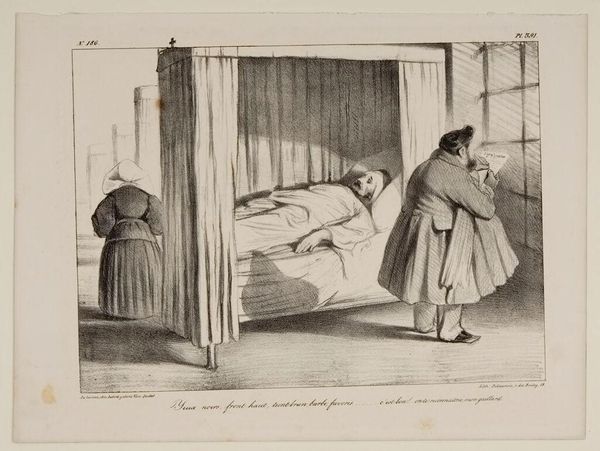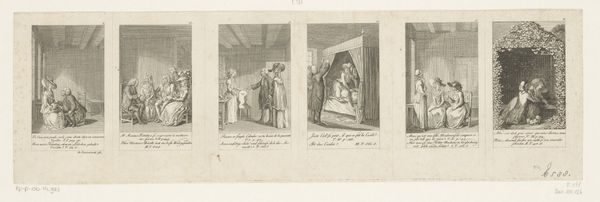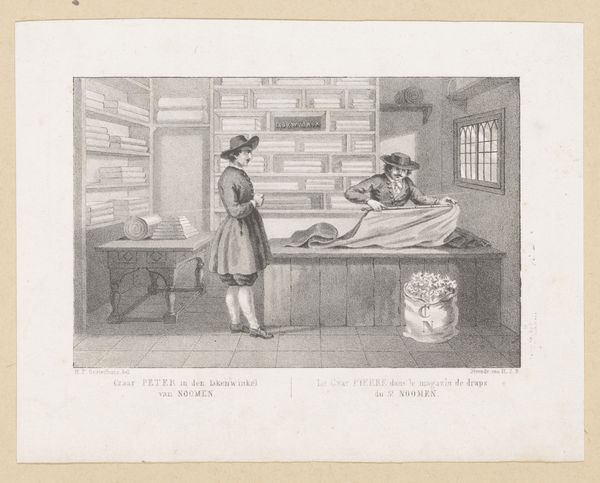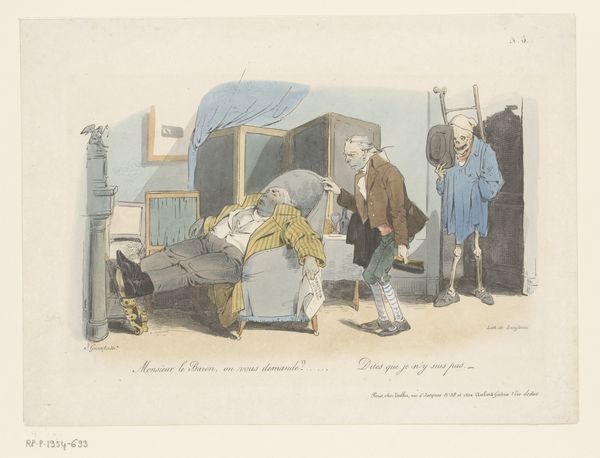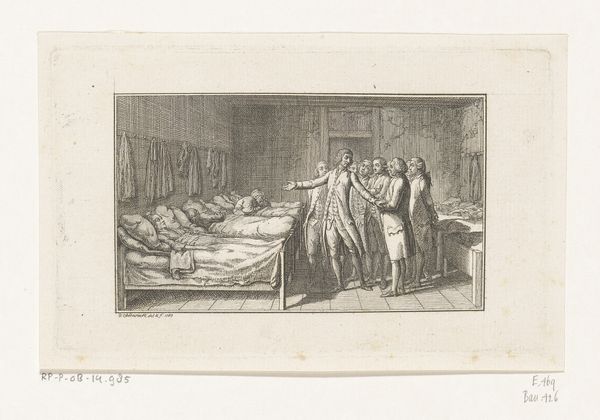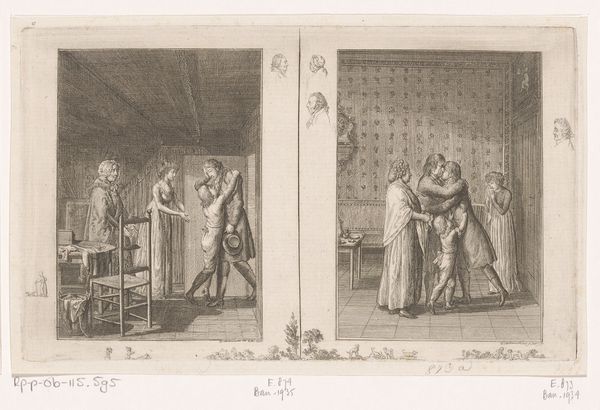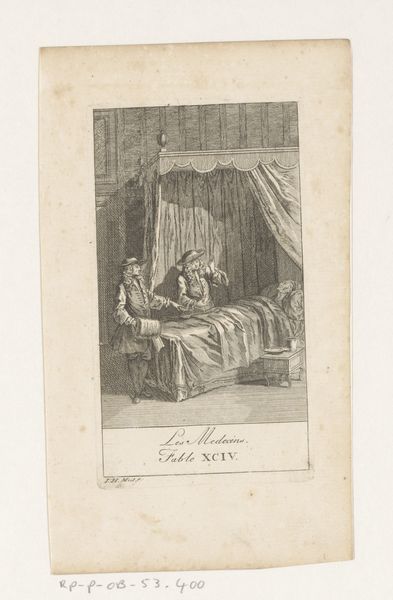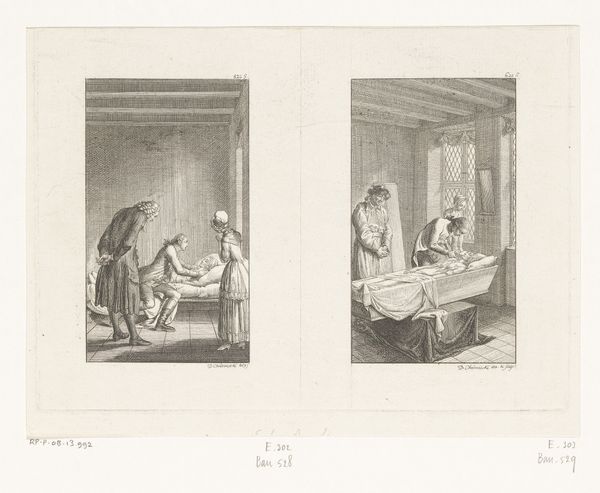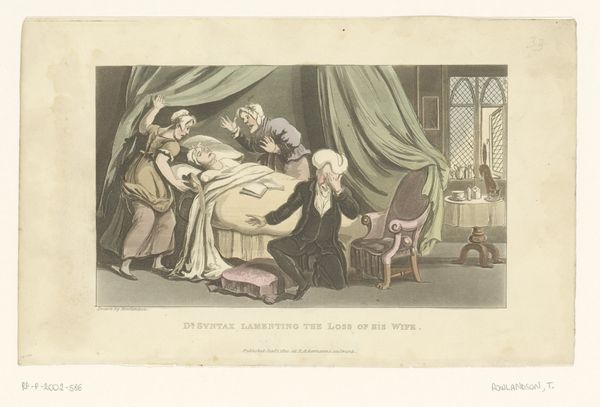
Karikatuur van Lodewijk Filips I, koning van Frankrijk als rapporteur 1834
0:00
0:00
honoredaumier
Rijksmuseum
drawing, lithograph, print
#
portrait
#
drawing
#
lithograph
# print
#
caricature
#
romanticism
#
genre-painting
Dimensions: height 222 mm, width 280 mm
Copyright: Rijks Museum: Open Domain
Curator: Oh, this one hits with a certain grim humor. Look at the fellow in the bed! Editor: This lithograph from 1834 is by Honoré Daumier. It’s titled "Caricature of Louis Philippe I, King of France as Reporter." Immediately, I’m struck by how the artist uses a restricted tonal palette of greys to underscore the bleak atmosphere, effectively heightening the work’s critical bite. Curator: Critical bite is right! I get the feeling Daumier isn’t holding back his opinion. It’s like a scene out of some twisted play, right? A patient looking like he is close to death and the king writing things about him as if it's an event report! What is that relationship? The heavy lines really give the impression that death is approaching fast. I'd love to know where it was created from! Editor: Note how Daumier uses contrasting textures to articulate political critique, blending soft hatching to render volume alongside sharp, linear contours that exaggerate caricatural features. You know that as a lithographer, Daumier embraced the graphic medium's potential to capture the zeitgeist with unparalleled immediacy. I really want to delve more into the way the artist engages with visual satire. Curator: Oh absolutely. You nailed it! Each element speaks to a broader cultural or political commentary. A Romantic impulse fuels this piece—not in its prettiness, mind you, but in its raw, emotive power. It feels like something straight out of a nightmare but grounded in the harsh reality of 19th-century France. Daumier captured lightning in a bottle, no? I like this guy! Editor: Daumier has managed to create something more than a fleeting political statement with form. The calculated chaos on display helps articulate the societal unrest he sought to spotlight. I wonder, too, if his choices aimed to anticipate viewers interpreting both individual narrative and widespread critique. Curator: Yeah, thinking about it now. It really sums up so many eras where truth and authority felt, shall we say, a little...ill. It makes you feel a bit sad but mostly thoughtful, doesn’t it? Editor: I would agree. Art's power sometimes lies less in giving answers and more in asking vital questions.
Comments
No comments
Be the first to comment and join the conversation on the ultimate creative platform.
